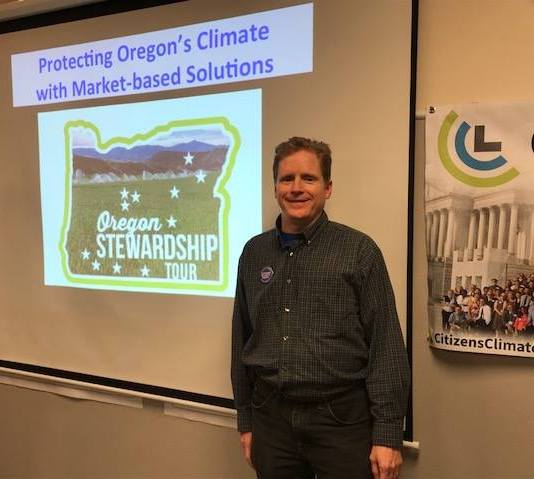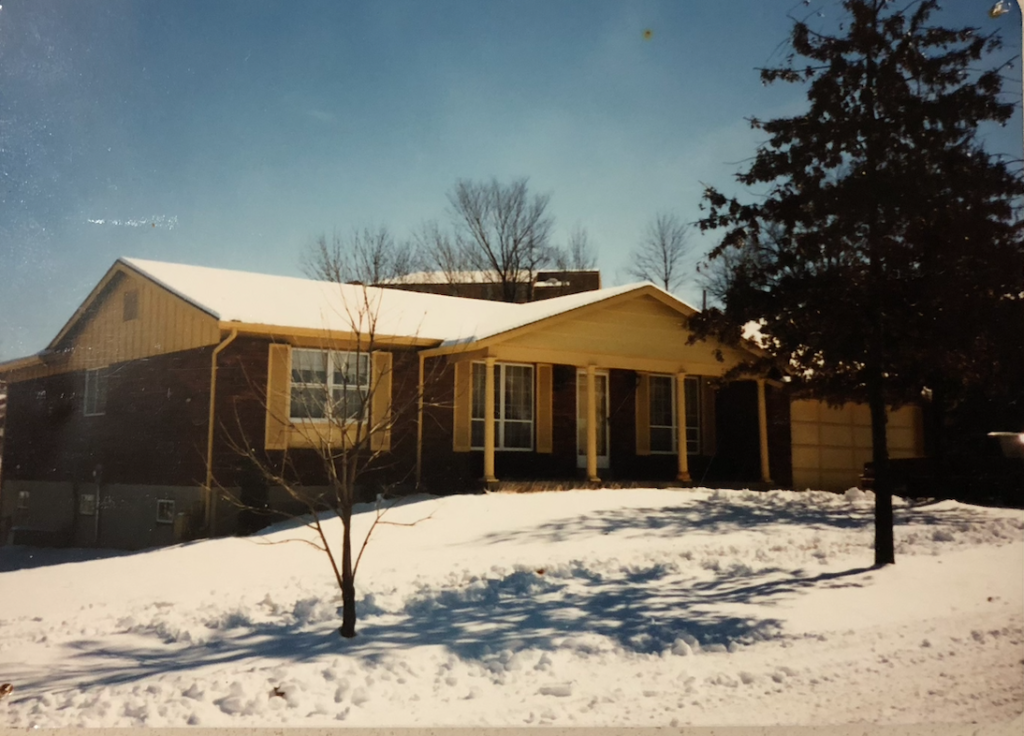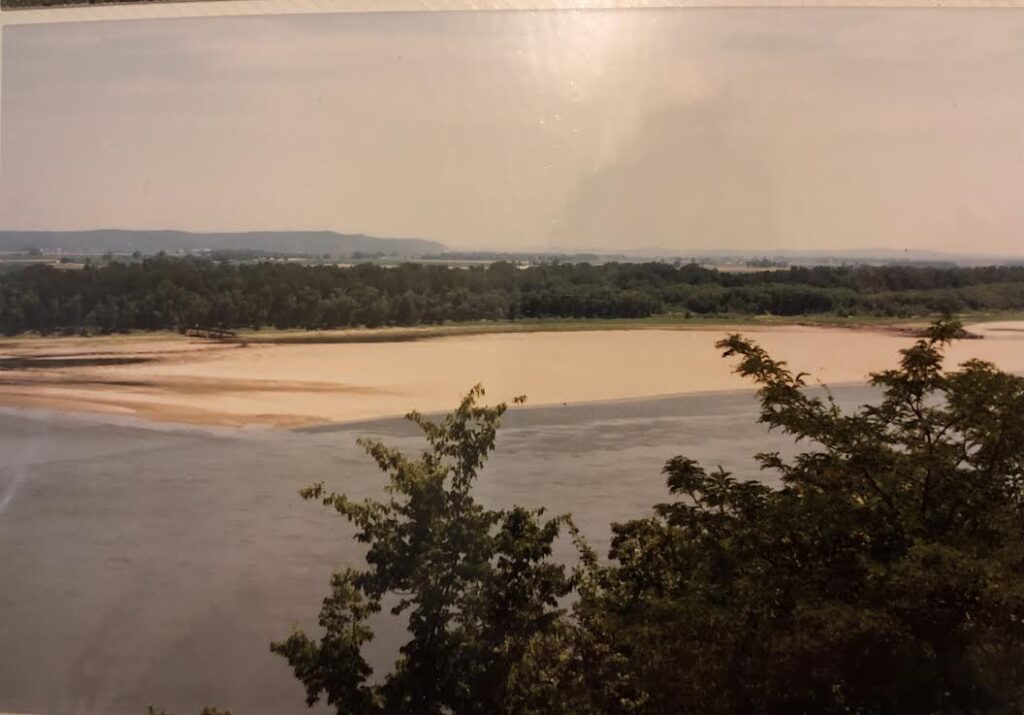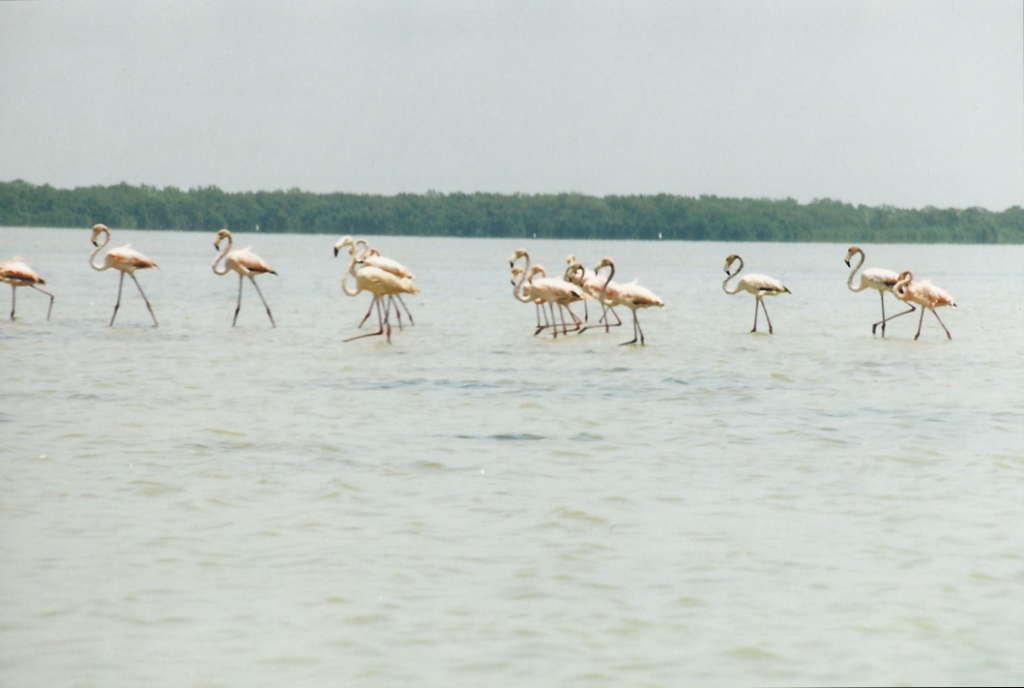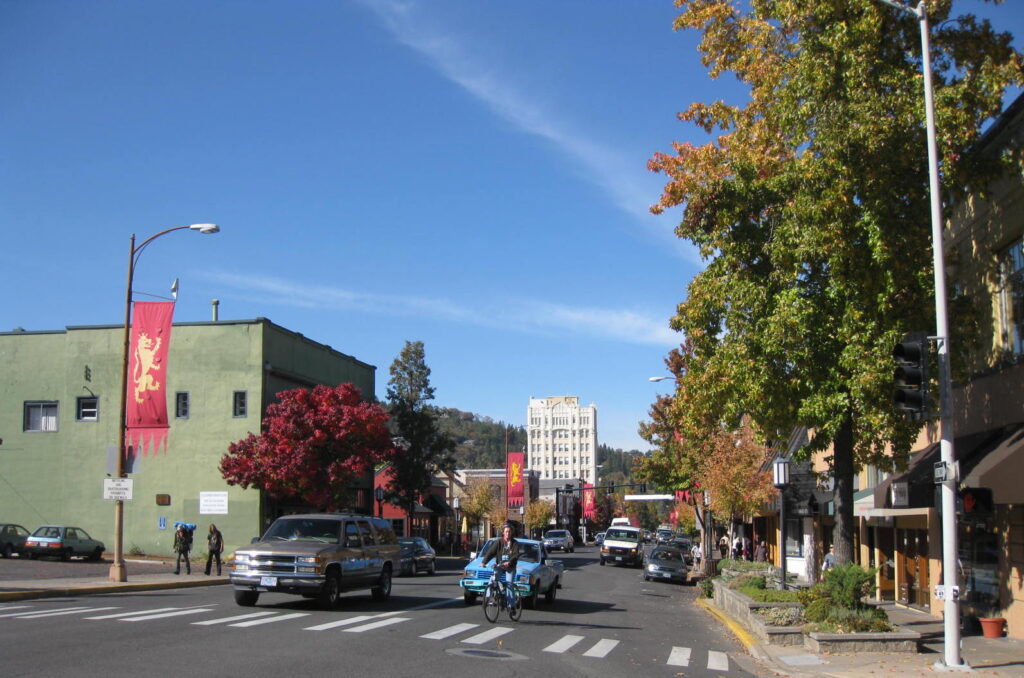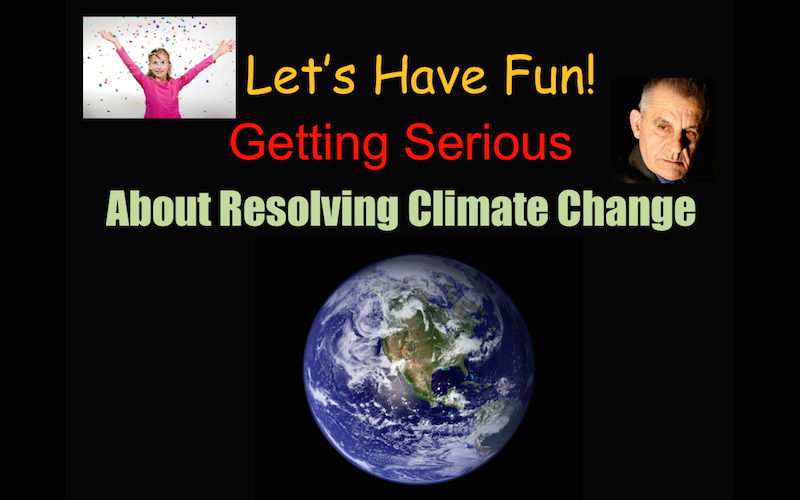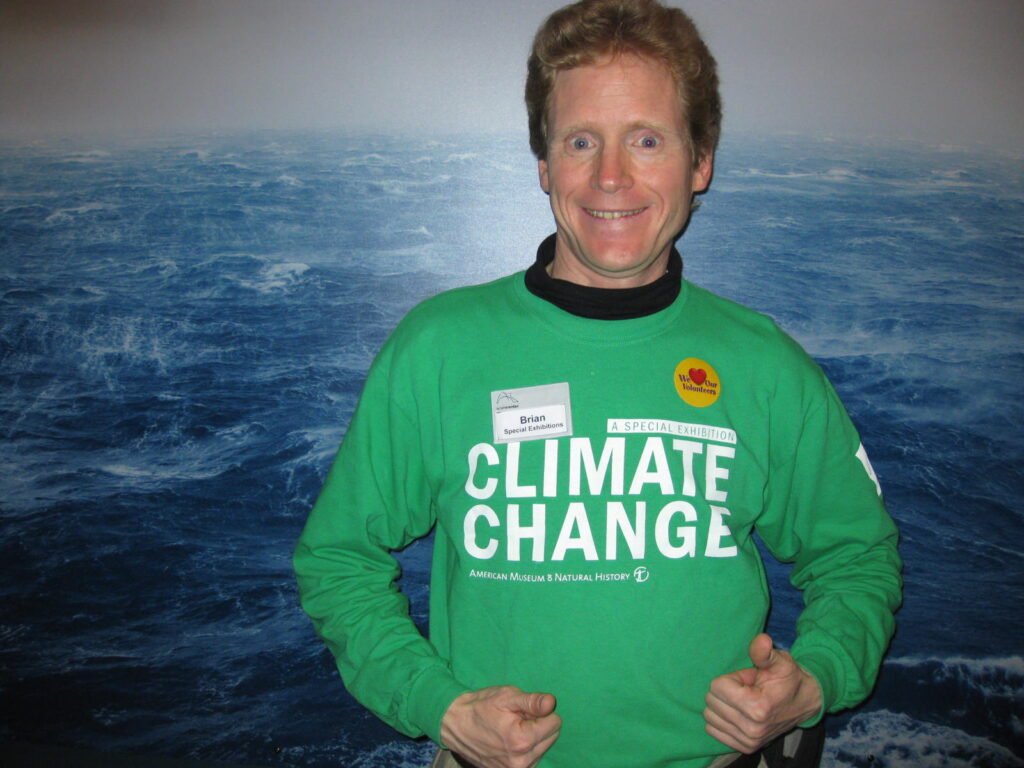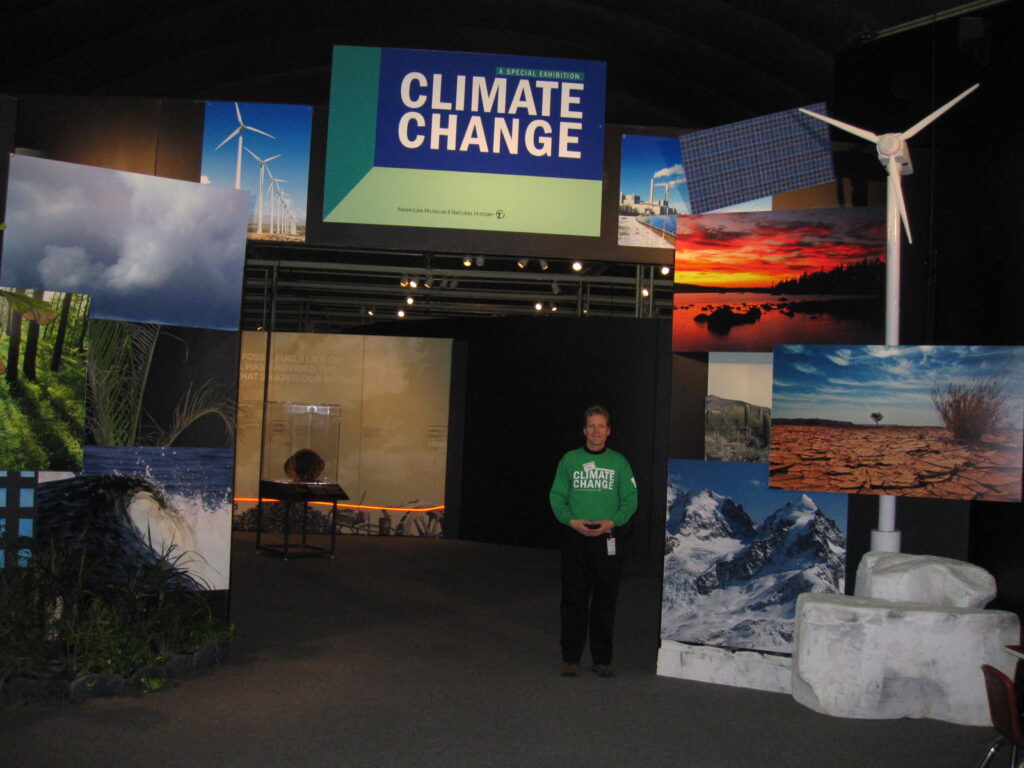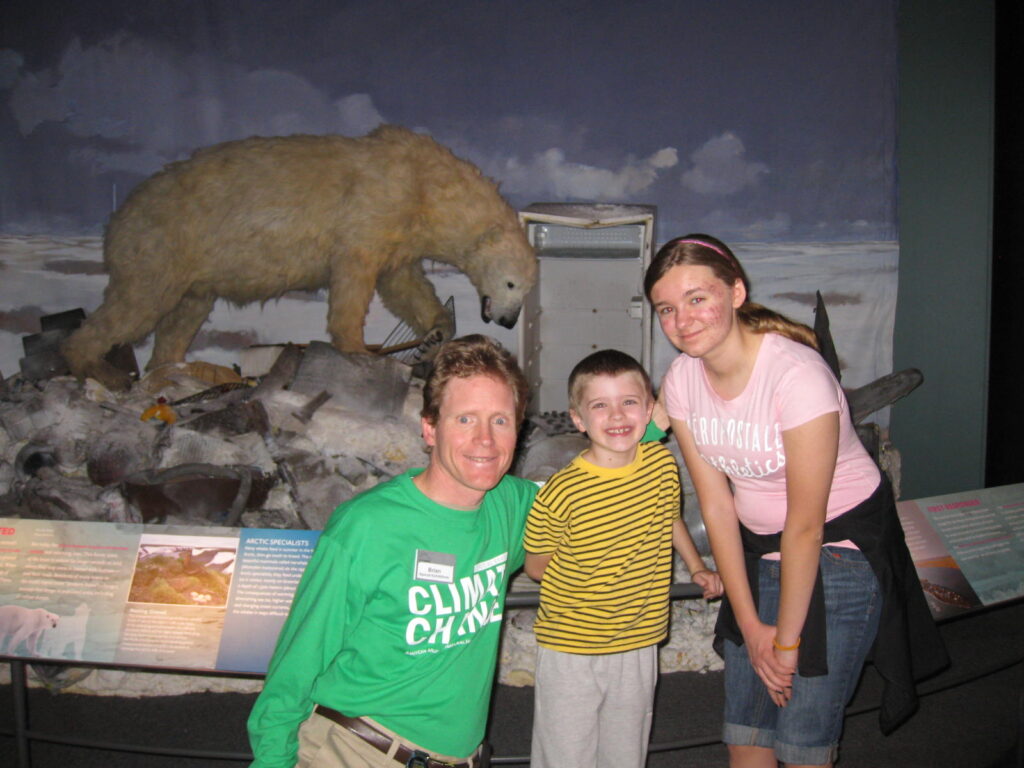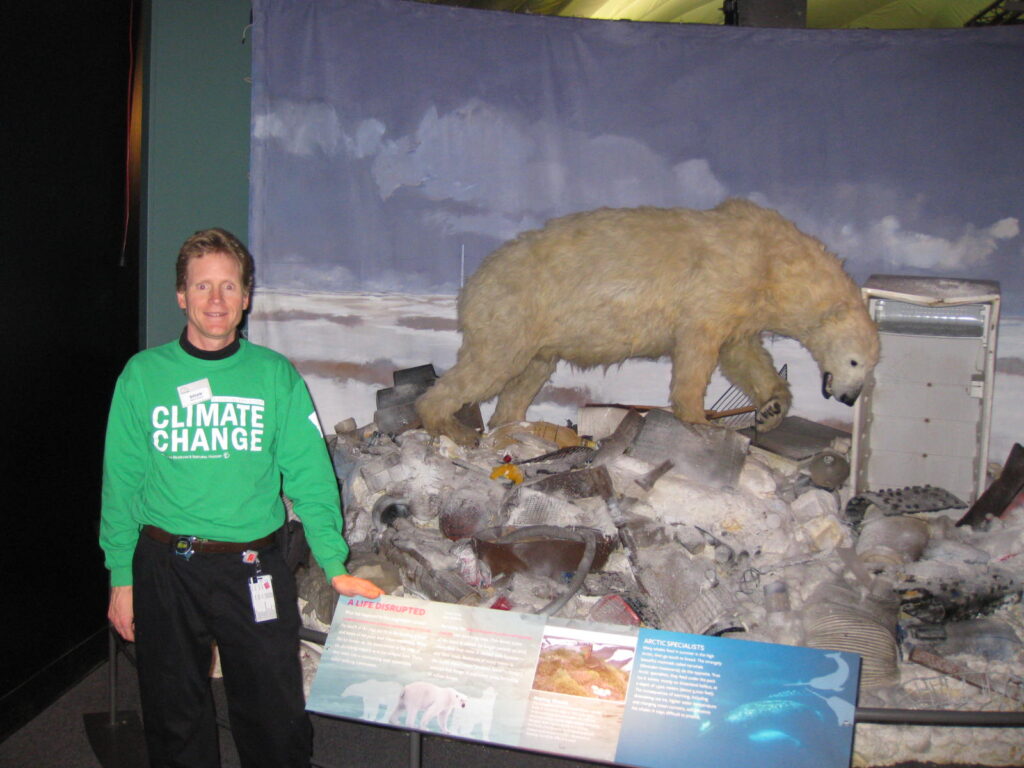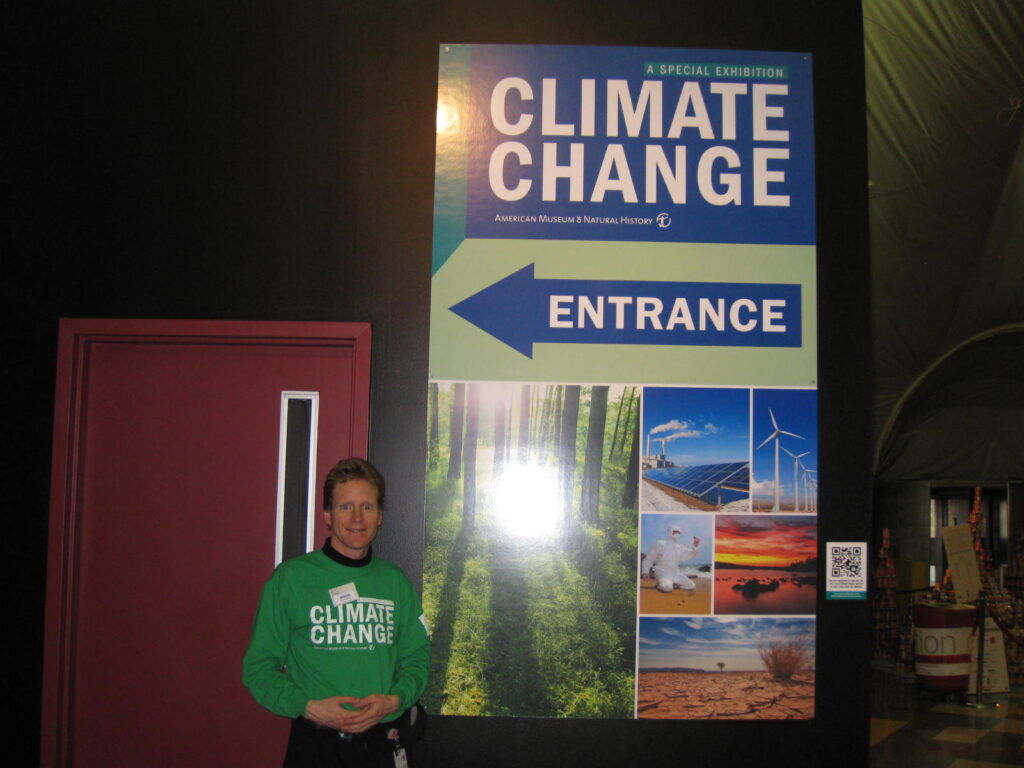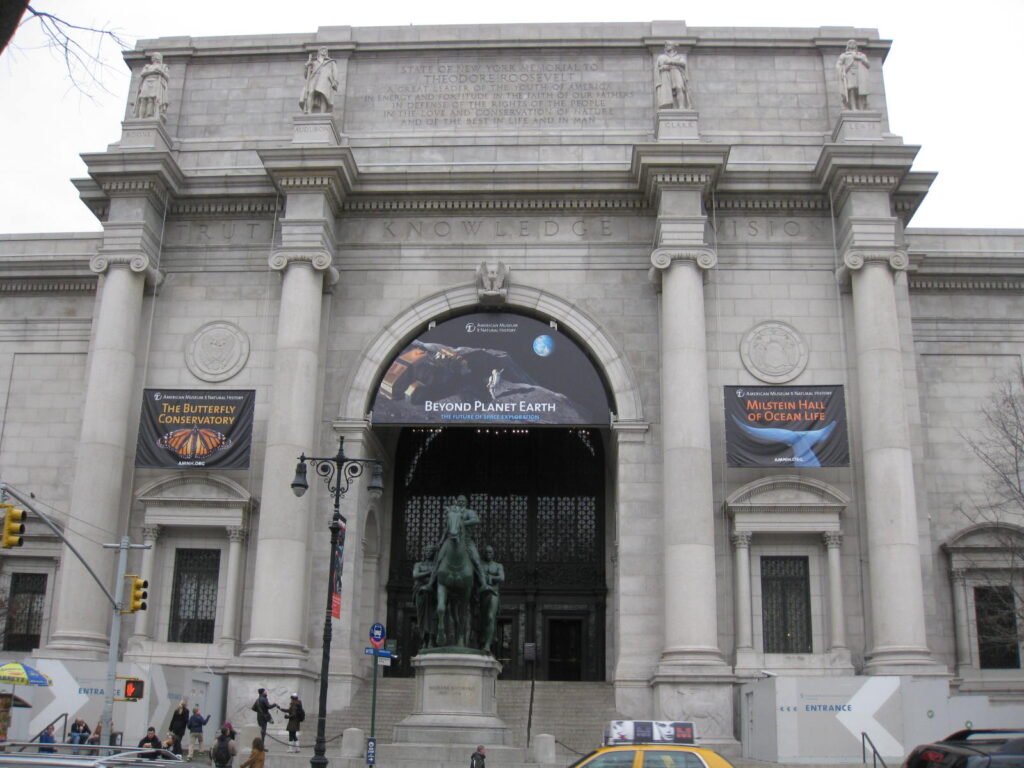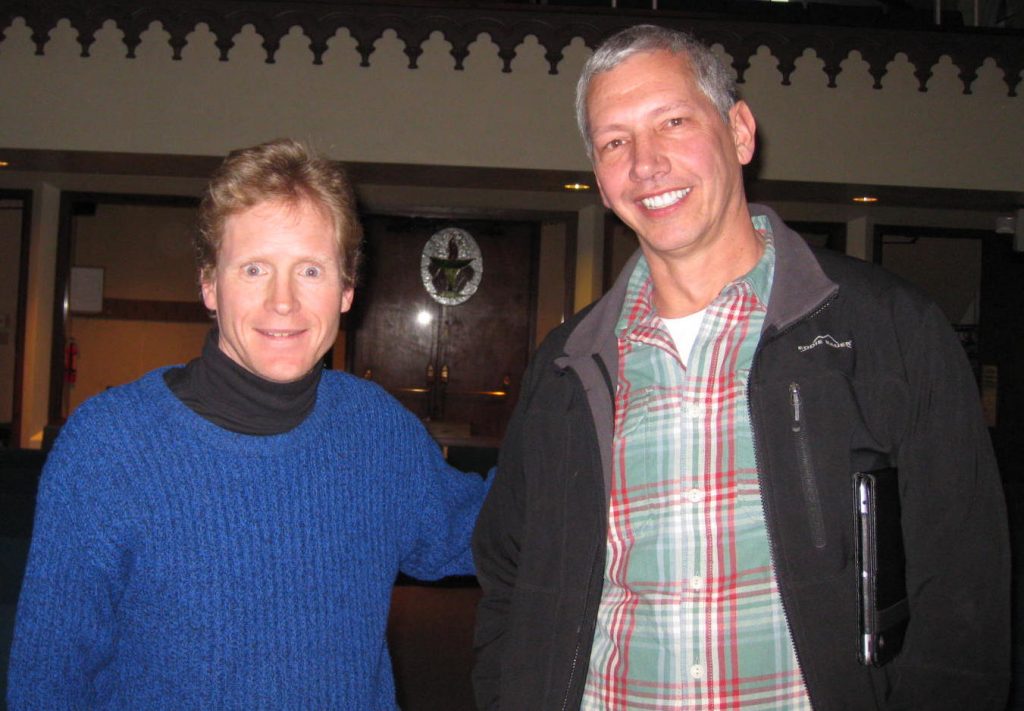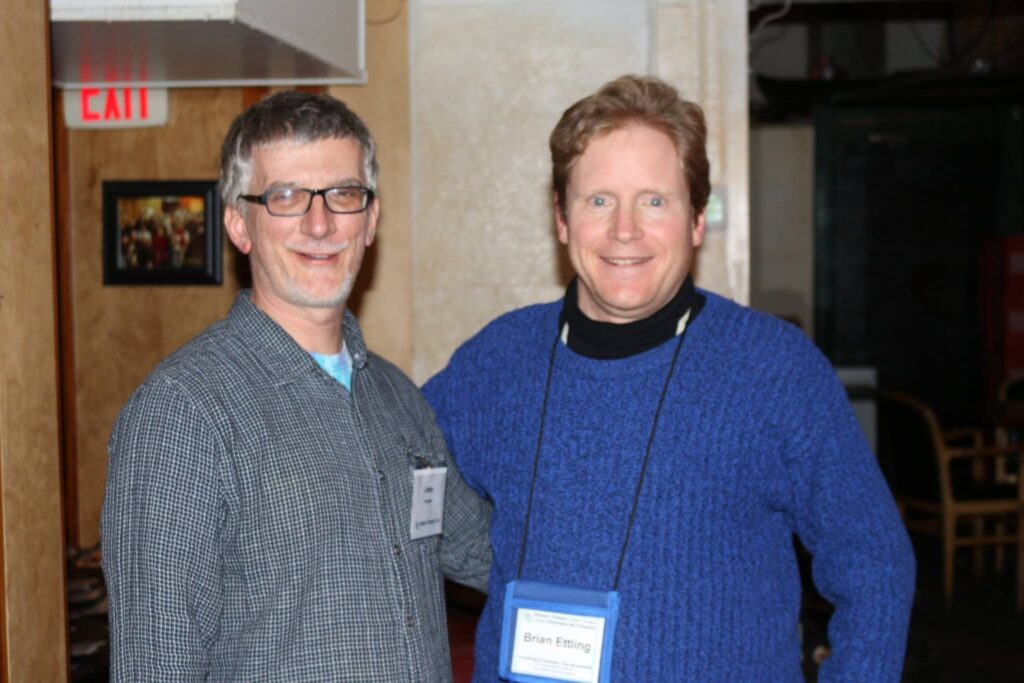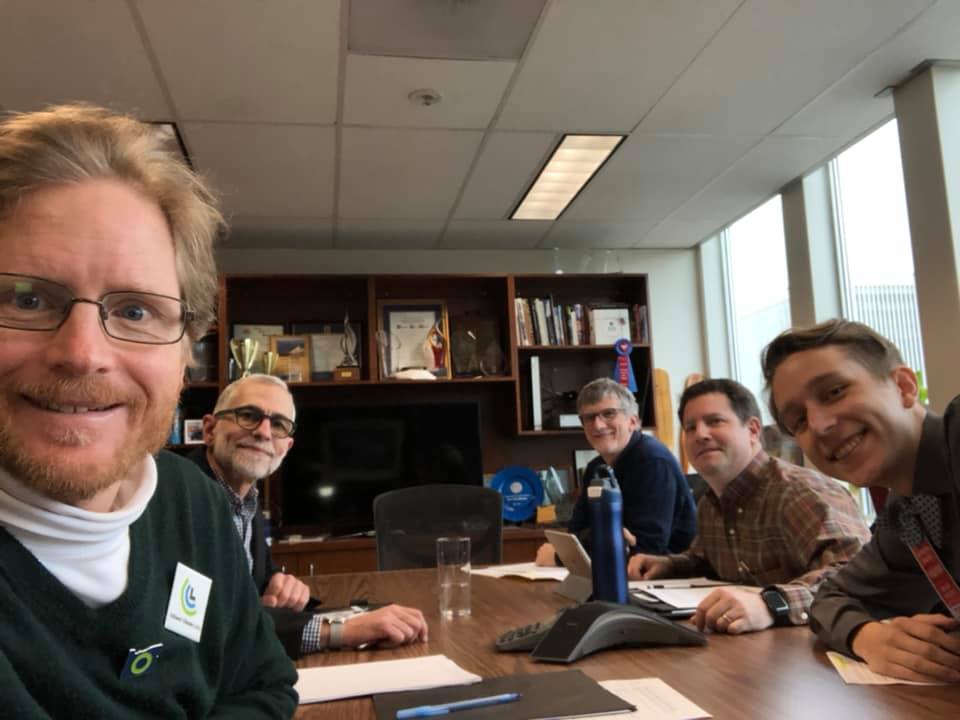
As climate organizer, one of the actions I am most proud is leading a speaking tour across eastern and southern Oregon for Citizens’ Climate Lobby (CCL) in October 2017. Many CCL friends and volunteers helped make this tour a success. However, it was also one of the bravest and boldest feats I have done driving 1,600 miles myself in my own car to 11 cities over 12 days.
During this 2017 tour, CCL Oregon had an active website where I blogged daily updates about the tour, oregontour.org. Unfortunately, that website was no longer maintained a couple of years afterwards. Fortunately, with the Internet Archive Wayback Machine, also known as web.archive.org that allows people to go “back in time” and see how defunct websites looked in the past. Thank goodness for its founders, Brewster Kahle and Bruce Gilliat, for developing the Wayback Machine to provide “universal access to all knowledge” by preserving archived copies of these now non-functioning web pages, such as oregontour.org.
Because of that Oregontour.org website, for years I did not bother to post about that tour on this blog because I took it for granted that the website would always be there. I noticed this website had disappeared in 2021. I then emailed the Portland CCL volunteer who created the website, Nathan Grey, to see if he could help me revive the website. He responded that he didn’t think there is an easy way to reconstruct it. However, he gave me this link find some snapshots of it on the Wayback Machine. I was relieved to see that important chapter of my life was still preserved and archived there.
This 12-day tour from October 24, 2017 to November 4, 2017 was a huge undertaking for me. For a recap, I had
• 9 public outreach events
• 2 lobby meetings with district offices of Rep. Greg Walden
• 2 newspaper editorial board meetings
• 2 live radio interviews
• 4 published articles in Oregon newspapers featuring the tour
• 4 press releases published announcing local tour events.

Starting the 1,600 journey of this climate change speaking tour from Portland, OR
From my home in Portland, Oregon, I drove on the first all the way to Baker City, Oregon to give a community presentation. This was about a 234-mile one way drive to far eastern Oregon. During that drive, not far from my home on I-84 in the Columbia River Gorge, I heard a loud bang underneath my car as I ran over something, not knowing what it was. Fortunately, my car was fine to complete this journey as I worried my car might have been messed up somehow.
It felt like a long drive to Baker City, but I did arrive around late in the afternoon, plenty of time before giving a presentation that evening at the Baker County Library. Two Portland CCL volunteers, Barry Daigle and Jason Lewis met with me at majestic Geiser Grand Hotel in downtown Baker City the to go over the logistics for the next two days. They were originally from that area. They each generously drove from Portland to Baker City to partner with me for these events. They used their local connections to encourage local residents to come to the Baker City talk that evening and the talk in La Grande the next evening.
The trip felt like it was off to a great start because they pointed out to me the front page of the Baker City Herald announcing my talk at the local library that evening. We were not sure what the attendance would be. We were happy that fifteen people did attend.
After Baker City, I spent the next day giving a climate change presentation and newspaper editorial board meeting in La Grande, which was only about an hour away from Baker City. After La Grande, I spent the third day of the trip driving to John Day, Oregon, which was about a three-hour drive. The fall colors of the Aspen trees looked amazing and the 9,036 foot tall Strawberry Mountain looked so majestic towering over the John Day area. I just had to stop at a rest area for awhile to admire the stunning beauty and try to capture it on film.
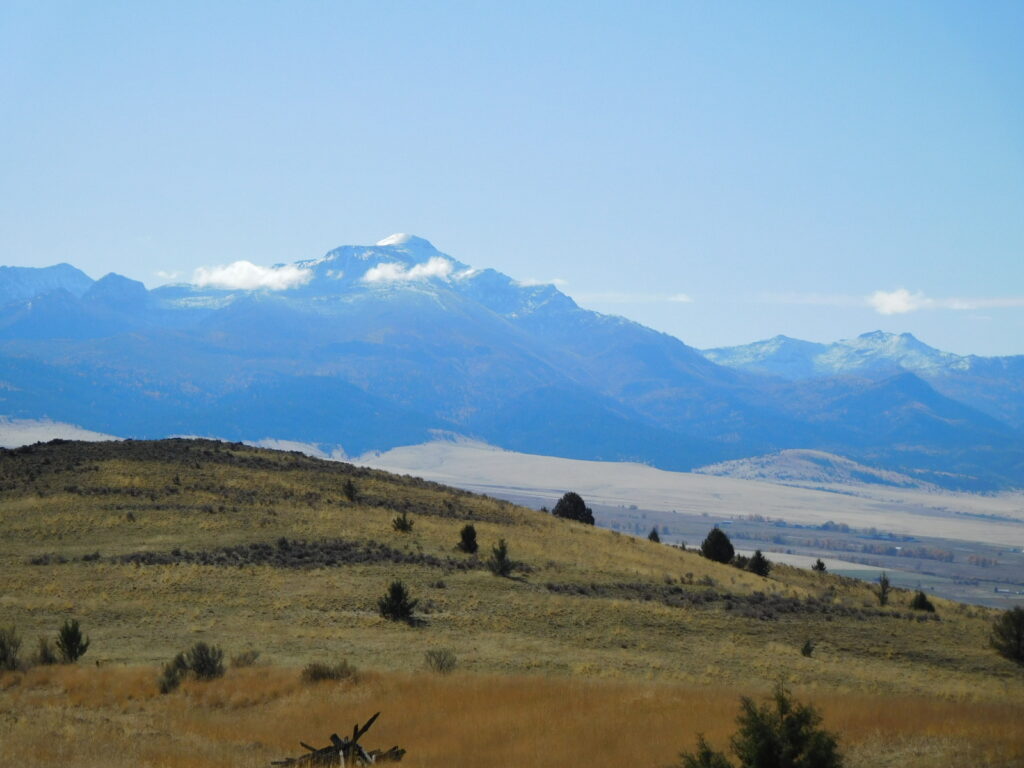
The fourth day, I drove two hours to Burns to give a presentation. Between giving the presentations, driving to the presentations, setting up for the presentations and various meetings I would have in these towns, I had other tasks. One of the tour organizers, Forrest Roth, told me I must blog at the end of each day to promote the progress on my journey. Very late at night, I would email my daily blog entry and photos to Forrest. He then generously edited what I wrote and uploaded my blogs and images from that day to the Oregontour.org website.
I started to feel bone tired by the third day of my trip. On long car trips, I have always enjoyed when family, friends, or my wife Tanya drives, and I can just sleep in the car. With just me driving, there was no rest for the weary. I could have used a nap so bad! The spare arid eastern Oregon scenery kept me going. It was so beautiful. Sometimes I would drive many miles without seeing another car or person. It made me feel like I was truly in the rugged wide open spacious country of the west.
Every audience for each presentation was so different. My first two presentations in Baker City and La Grande were mostly seniors. High school students in John Day, Oregon made up nearly all the audience on my third night. In Burns, I gave the climate talk in the adjacent community of Hines. It turned out to be a very progressive audience where some of audience members skeptical of the moderate market-based carbon fee and dividend approach that I advocated.
A couple of days later in Redmond, there was a couple of people in their 70s that were quite negative. The woman yelled out that she didn’t believe me when I shared my fear of exposure breathing dirty polluted air of a nearby coal plant growing up near it in St Louis, MO. The man wanted to question the science of climate change and all my sources.
It was exciting to do all this public speaking. At the same time, I never knew what angle they were going to come at me with their questions and comments. At each stop, a CCL volunteer from Portland or nearby city would assist me with setting up the presentation space and networking with the locals attending. Since I was driving by myself several hours from one Oregon city to another, it was always a godsend to see them.
Pacific Crest hikers talk about ‘Trail Angels’ that help them on their journey. I had ‘tour angels’ that helped me along the way such as Barry Daigle and Jason Lewis in Baker City and La Grande, Eric Means meeting up with me on his motorcycle in John Day, Russ Donnelly meeting up with me in Burns/Hines, Russ and Suzanne Butterfield partnering with me in Prineville, Redmond, and Bend, and Sherrill Rinehart working with me in Lakeview, Klamath Falls, Medford, and Grants Pass. Yes, I was driving by myself sometimes for long stretches, but a Tour Angel met me at each location, as well as very friendly local volunteers of the towns where I was speaking.
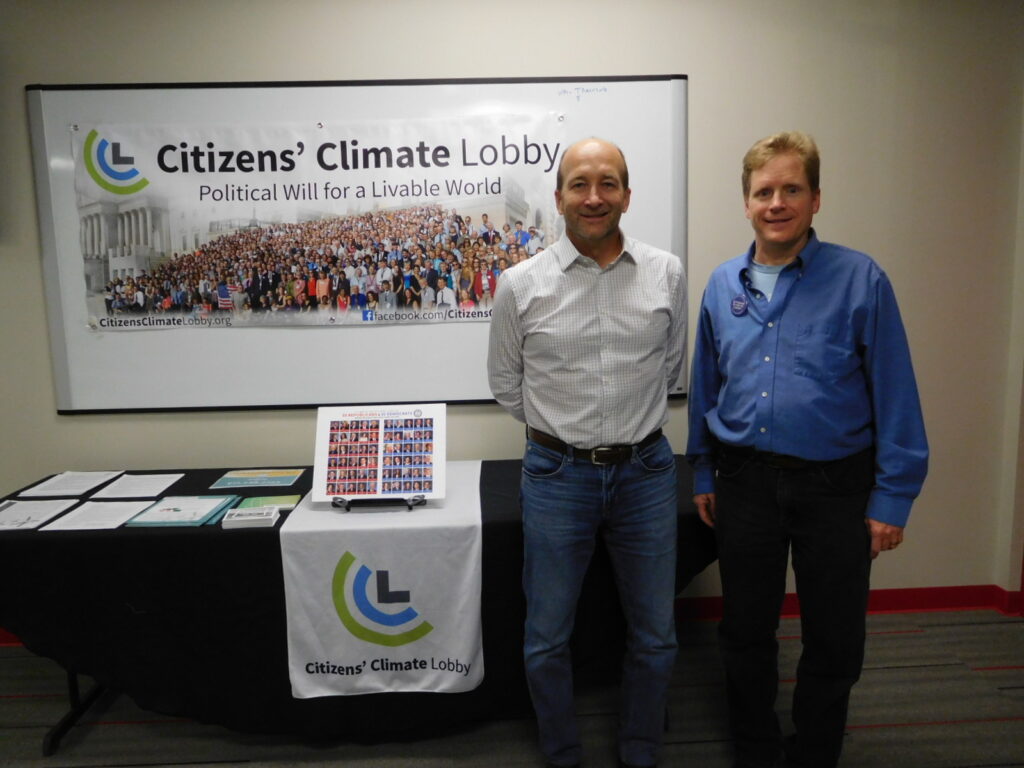
Each time, the CCL team in Portland and around the state found local volunteers in advance where I could spend the night in their homes. Each of these homes I stayed in during my trip were always very comfortable. The hosts were always so warm and welcoming. I just wanted to crash in their homes. The problem was that I would get in their homes late after doing my evening presentations and chatting with the attendees afterwards. Then, the next morning, I would need to leave early to drive to the next city. Or, I had morning obligations in that same town, such as meet with the mayor, do a radio interview, newspaper editorial board meeting, meet with Congressional staff, and squeezing some sightseeing.
My two-year wedding anniversary fell in the middle of this trip, and I really did miss my wife, Tanya. I love traveling with her and being around her. She is always so supportive when I give my climate change talks. She would have liked to have seen the scenery in eastern and southern Oregon that I experienced. It would have been fun for Tanya to meet the people along with me. Like any couple, we would have had fun afterwards chatting about the people we enjoyed meeting and those that were a challenge.
Having said that, I love traveling and being on the road. In a sense, I was living one of my favorite Willie Nelson songs, On the Road Again or the Johnny Cash song I’ve Been Everywhere. Even more, I was talking about climate change every single day with actions like presentations, meeting with local officials, chatting with local residents, radio interviews, newspaper interviews, and Congressional staff meetings. In March 2017, I did a mini climate change speaking tour in Missouri organized by my CCL friend George Laur. These trips traveling around a state would start to exhaust me. At the same time, these trips were also exhilarating for me that I was possibly making a difference for climate action.
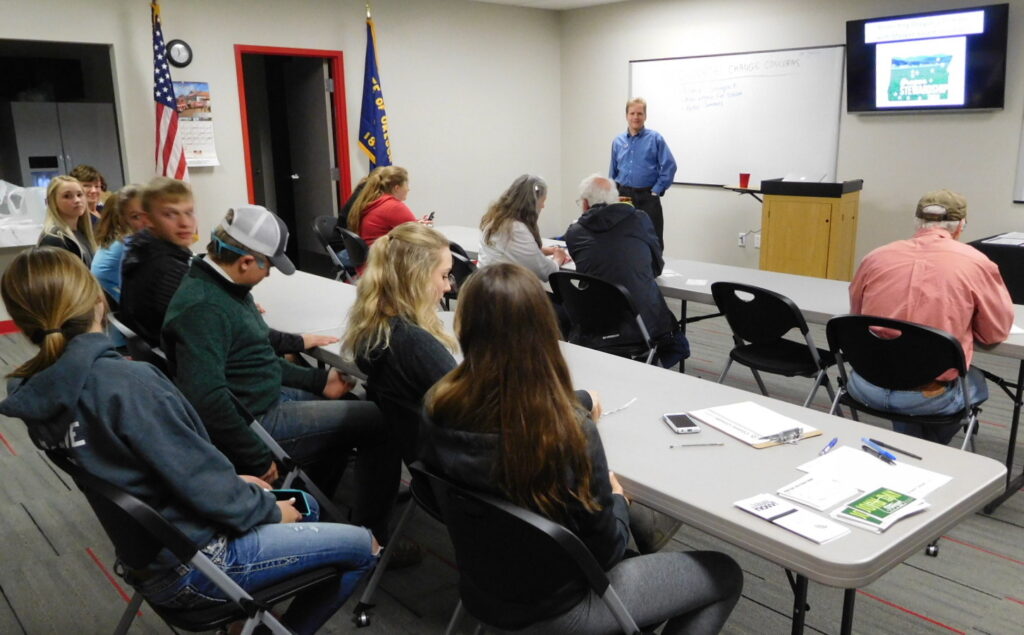
How The Oregon Stewardship Tour came together for me to take this journey
I got the idea for this tour from my CCL friend Peter Bryn who had organized a tour around Texas in 2015 called ‘Texas Energy Freedom Tour!’ Five CCL volunteers, Peter Bryn, Sandy Pinto, Ricky Bradley, Larry Kremer, and Brett Cease j conducted a successful 29-day, 30-city roadshow.
They held 71 events: 25 public presentations primarily to identify new CCL group leaders, and 46 meetings with various community leaders including Chambers of Commerce, county Farm Bureaus, mayors, newspapers, faith leaders, and Republican County Chairs.
This looked like a lot of fun, so I wanted to organize similar tours for my home state of Missouri and my adopted state of Oregon. I chatted with Peter a couple of times on the phone in early 2017 for his advice to organize an Oregon tour. One of the keys that Peter advised me was to form an organizing committee to plan an Oregon Tour. After I moved to Portland in early February 2017, I worked with CCL Greater Northwest Regional Coordinator Tamara Staton and CCL Portland Group Leader Daniela Brod to form a tour committee.
Other CCL volunteers from Portland and around Oregon did coordinate with the committee which ultimately help me undertake this tour in late October and early November. At one point, early September, it looked dicey that the tour could happen. Tamara even said later on that she came close to pulling the plug at that point. However, the committee worked hard to find the interested people in the eastern and southern Oregon cities to pull it together.
At the same time we were striving to put together an Oregon tour, CCL volunteers in Washington state were organizing their own state tour. They called their excursion the “Water, Wind & Fire” tour. Led by Washington Citizens’ Climate Lobby volunteers Steve Ghan, Dr. Sara Cate, and John Sandvig, and Jen Syrowitz of Audubon Washington, they completed a successful 15-day, 12-city tour through Eastern Washington and Northern Idaho. Their tour started just as mine was ending. From November 2-17, they held 31 events, including:
15 public presentations
3 individual meetings with government leaders
7 meetings with community leaders
5 radio interviews
1 TV interview
During the summer, John Sandvig and I had phone calls to exchange ideas to make our tours successful. The difference between ‘Texas Energy Freedom Tour!’ and the Washington State “Water, Wind & Fire” was that there was a group of people completing those tours. In my case, it was just me driving around the state giving all of the presentations, doing all the radio and print interviews, and doing what it took, along with the local volunteers to make our tour succeed.
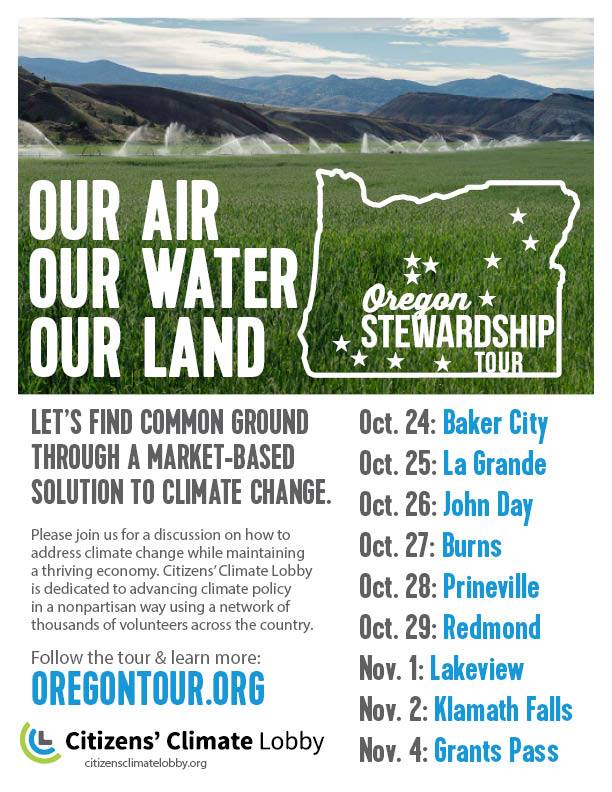
We called our Oregon Tour “The Oregon Stewardship” Tour. We thought that taking climate action, especially with urging Congress to pass a carbon fee and dividend, would be one of the best ways to be good stewards of Oregon’s precious air, land and water. The goal was to go to the most conservative parts of eastern and southern Oregon to see if we could make an impact to get more volunteers in those areas for CCL. During the summer, it was understood that at least one other person was going to join me for this tour. However, he dropped out in early September. Thus, it still felt like the weight of the tour was all going to be on me, even if there were volunteers helping me at each location.
The Highlight of the Oregon Stewardship Tour: Visiting Lakeview, Oregon
The weight did take its toll on me. When I was staying in Bend around the 7th day of the tour, I noticed that I was starting to come down with a cold. Fortunately, I had a light schedule that day. Bend CCL volunteers and I had a meeting with the Bend Office with the District Director of GOP Congressman Greg Walden. My hosts in Bend generously allowed me to stay for a day to rest up before continuing on the next leg of my trip. Resting for that day helped a tiny bit, but my body seemed worn down by the tour. I am so glad I plowed ahead to complete the tour.
From Bend, I drove to Lakeview, Oregon on November 1, 2017. I had a 3-hour drive to Lakeview, which is about 14 miles north of the northeast California border. Lakeview was one of the highlights of my trip. It’s located in one of the least densely populated areas of the United States. My host was Jim Walls, a local resident who wore a cowboy hat, cowboy boots, and a western belt buckle. He spoke with a down home twang like someone that you would hope to meet visiting a western wide open spaces landscape. One of the first things Jim told me was,
“Son, this is not rural out here. This is frontier country. You could drive over 100 miles in any direction leaving Lakeview and not see another human being.”
Jim Walls was the Executive Director for the Lake County Resources Initiative (LCRI), a non-profit working on natural resource projects to promote local clean energy projects to reduce the threat of climate change. With Jim’s leadership and the efforts of LCRI, Lake County had become one of the first counties in the U.S. to be a net exporter of clean energy.
After I arrived in Lakeview, Jim gave my friend Sherrill and me a tour of the massive field of solar panels next to the town. These solar panels and geothermal wells were providing not just enough energy for Lakeview, but these Lakeview clean energy facilities were exporting energy to California. Jim mentioned that the new tax revenue from solar enabled Lake County to hire new staff for the Lakeview hospital and boosting other job growth for the local economy. All the solar and geothermal looked like the future for the United States and the world. It gave me so much hope. Jim’s efforts have not gone unnoticed.
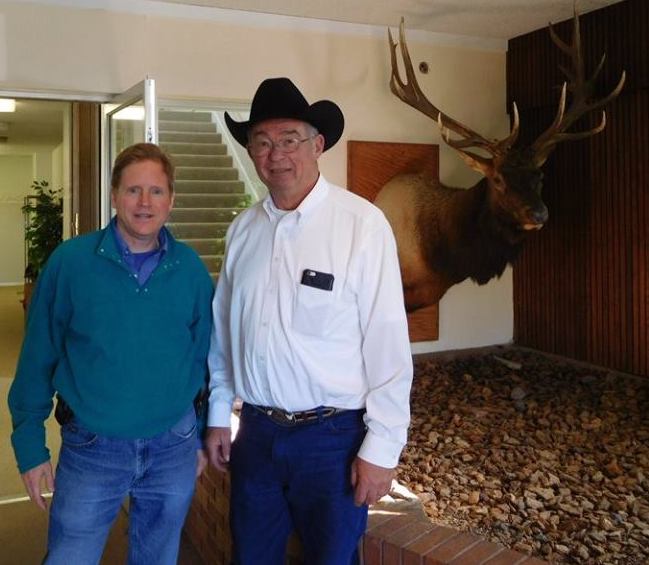
10 years ago, Jim Walls gave a TEDX talk, Lake County, Oregon – America’s 1st Zero-Energy County: Jim Walls at TEDxOSU. In 2020, Lakeview’s large scale solar projects and Jim Walls were featured in the documentary The Other Side of the Hill, which explores the impacts of a changing climate in rural Eastern Oregon. Jim Walls is quite a visionary and a trail blazer showing that the United States, especially rural deep red conservative U.S, can move away from fossil fuels to a clean energy future.
Jim had a great way speaking to his conservative neighbors and fellow community members. When he introduced me when I gave my presentation at that evening, Jim said, “I am not a gambler, so who am I to go against 97% of climate scientists are telling us that climate change is real and we need to do something about it. I believe we should leave the planet stronger than we found it, especially for my 14 grandchildren.”
Pushing myself to complete the tour while savoring the experience
After Lakeview, I drove over to Klamath Falls the next day. The first item on my schedule that day was to give a climate change talk to the Mayor of Klamath Falls and 8 other staff from various government agencies invited by the mayor. That evening, I gave my presentation to a group of residents in Klamath Falls. When I worked at Crater Lake National Park as a park ranger for 25 years, I went to Klamath Falls on many of my weekends for grocery shopping, eat at a local Vietnamese Restaurant, and occasionally see a movie. It was a dream come true for me to give a climate change talk in a community I had been to so often.
On November 3rd, I had another two-hour drive from Klamath Falls to Medford, Oregon. The weather had been pleasant, even Indian summer like weather, for much of my trip. Not so that day. The weather was very rainy even a bit snowy driving over the mountain pass from Klamath Falls to Medford. I was very stressed to drive in that weather over the mountains to make it to my lobby meeting in time at the Medford office of Congressman Greg Walden. It was good to see my Southern Oregon CCL chapter friends at this lobby meeting, especially since I had co-founded that chapter four years earlier.

In the afternoon, I had a fun radio interview with independent Ashland radio station KSKQ 89.5 FM. My host and friend in Ashland, Oregon, Sherrill, had a reception for me late in the afternoon with local CCL volunteers. Even though I was feeling blah, I still met up with my friends Graham and Aubrey in Talent to go out for a lovely dinner with them. Talent is located 10 miles up the road from Ashland. I pumped myself with hot tea during dinner to keep myself going.
My cold was raging then from all the running around with this tour, excitement, rushing to make it to events on time, all the talking, and the weather bouncing around from hot to cold. I was dousing a lot of hot tea so I could speak and lessen the irritability of my sore throat.
Saturday, November 4th was my final event. I had an hour drive to Grants Pass for my last climate change presentation of the tour. I doused a lot of hot tea and spoke sparingly beforehand to save my voice for the event. Half of the audience was CCL volunteers from the Southern Oregon Chapter there to cheer me on and to engage with the few locals attended. It was a relief to give my final talk to a friendly group as I felt physically exhausted and was fighting a cold during this last day. I had mixed emotions because I loved hanging out with them. At the same time, after 12 days on the road, I just wanted to go home and start feeling better.
When the event finished that afternoon, I had a five-hour drive from Grants Pass to go home to Portland OR. I did not feel like driving. At the same time, I could not wait to see my wife Tanya. Being reunited with her gave me the much-needed inspiration to make it back to Portland that Saturday evening. I just wanted to sleep in on that Sunday to try to recover from that cold.
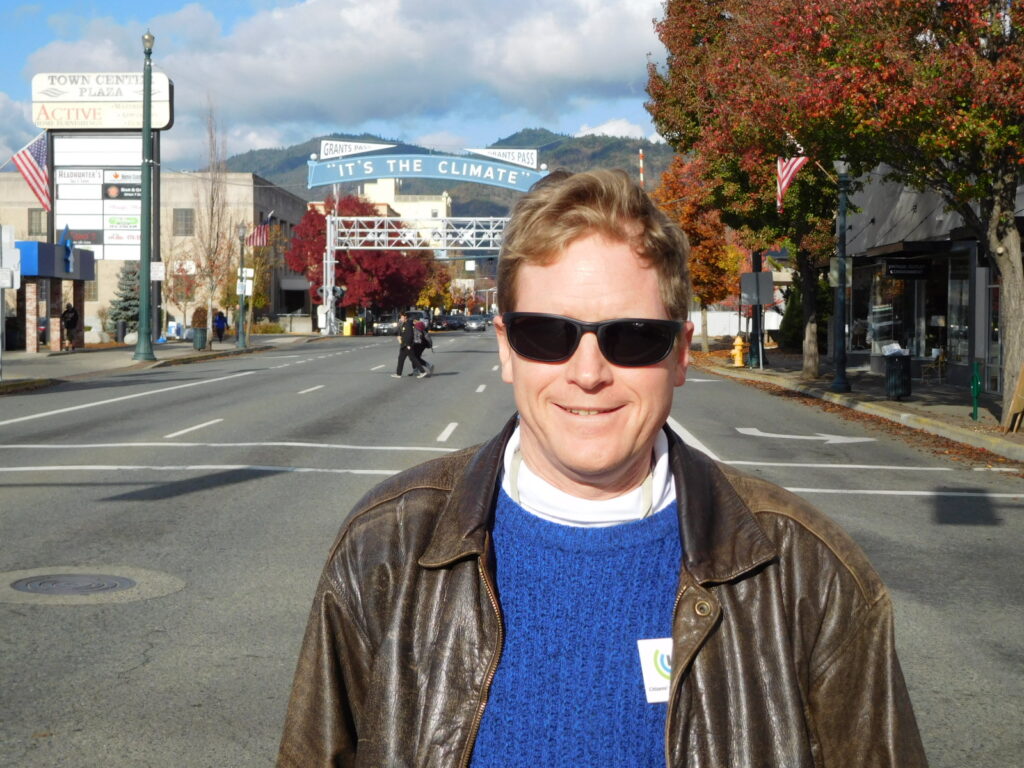
Lobbying in Washington D.C. for climate action and my final thoughts
Just one week later, on Saturday November 11th, I flew to Washington D.C. for the Citizens’ Climate Lobby November Conference and Lobby Day. On Tuesday, November 14th, CCL had our lobby day meetings with Congressional Offices at Capitol Hill. One of the meetings was with the DC office staff of Congressman Greg Walden. The Congressman hoped to join us for this meeting. However, he was held up on the House floor and could not make it on time. I presented to Walden’s staff a final report on my tour across his Congressional District, one of the largest Congressional Districts in the U.S.
One of the motivations for organizing this tour across this district was to show that he does have many constituents who care about climate change. I was able to present a big stack of constituent letters from attendees at my talks during the tour. I ended up speaking to over 180 of his constituents at all the talks I gave.
When southern Oregon CCL volunteers and I had a meeting at Congressman Walden’s Medford Office in August 2013, the staff informed us that “businesses and rural residents were not expressing climate action as a high priority.”
I did my best to show on this tour that climate action is a priority for many of his constituents. 2017 was an awful year in Oregon for wildfire smoke and many acres of forest that had burned. Many people, including constituents in his district, saw climate change firsthand. They wanted action from him, members of Congress, and our government. Congressman Walden did say publicly that climate change is real, and we must address the problem. Even more, he prided himself on driving a Toyota Prius to use less gasoline and emit less carbon dioxide. Yet, it was still hard to get him to budge to support CCL’s carbon fee and dividend policy.

Thus, the tour ultimately did not do much to move the needle with Congressman Walden. That did not bother me. I did my best to swing for the fences. I poured my energy into that tour and gave it my all. I would rather have tried and fallen short than not tried at all and always have regrets. As I mentioned at the beginning of this blog, it is one of the climate actions that I am most proud of to this day. It was one of my boldest and bravest feats.
I had fellow climate organizers in Portland that were very impressed that I had completed that tour. For years afterwards, I had some climate Portland area climate advocates tell me they were amazed that I had accomplished that tour. The Climate Reality Portland Chapter invited me to speak about this tour at their December 2017 meeting. I got invited to give other climate talks in the Portland area after I completed that tour.
After the tour, I was very exhausted and needed some time to breathe. I probably should have done a better job to follow up with the most enthusiastic people I met during the tour who expressed an interest in starting CCL chapters in their communities. I did call the most interested individuals a few times for several months afterwards. Sadly, as time passed, their interest faded in starting local chapters. I still hope I planted some seeds and inspired someone in eastern and southern Oregon with that tour to act on climate.
As a side note, this blog is just a summary for what happened on that 2017 Oregon Stewardship tour. For more details of the daily occurrences on that tour, I wish I could still recommend the website from that tour, oregontour.org. However, since that website is no longer active, thanks to the the Internet Archive Wayback Machine, you can still check out more details of that tour at https://web.archive.org/web/20190109033303/http://oregontour.org/
